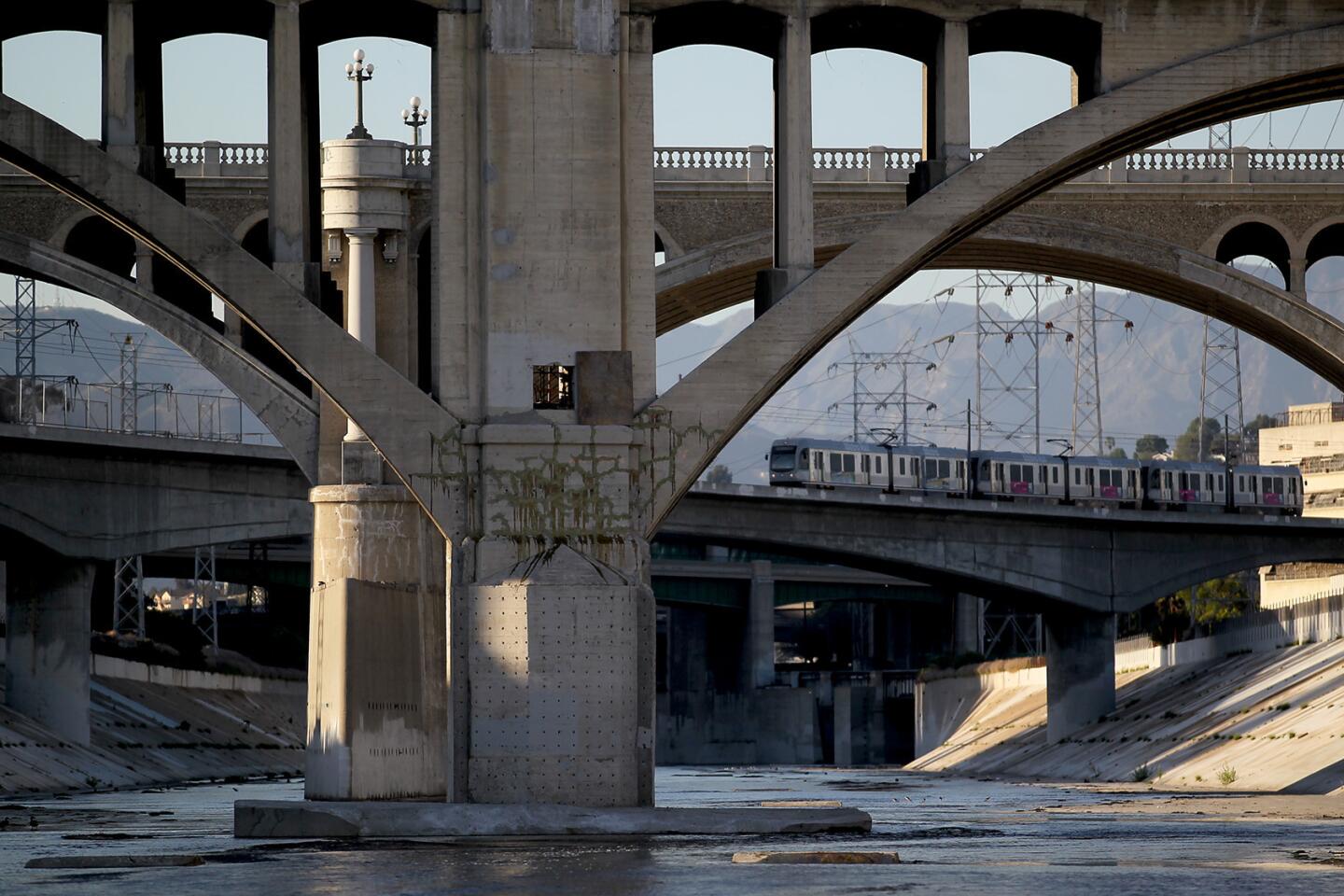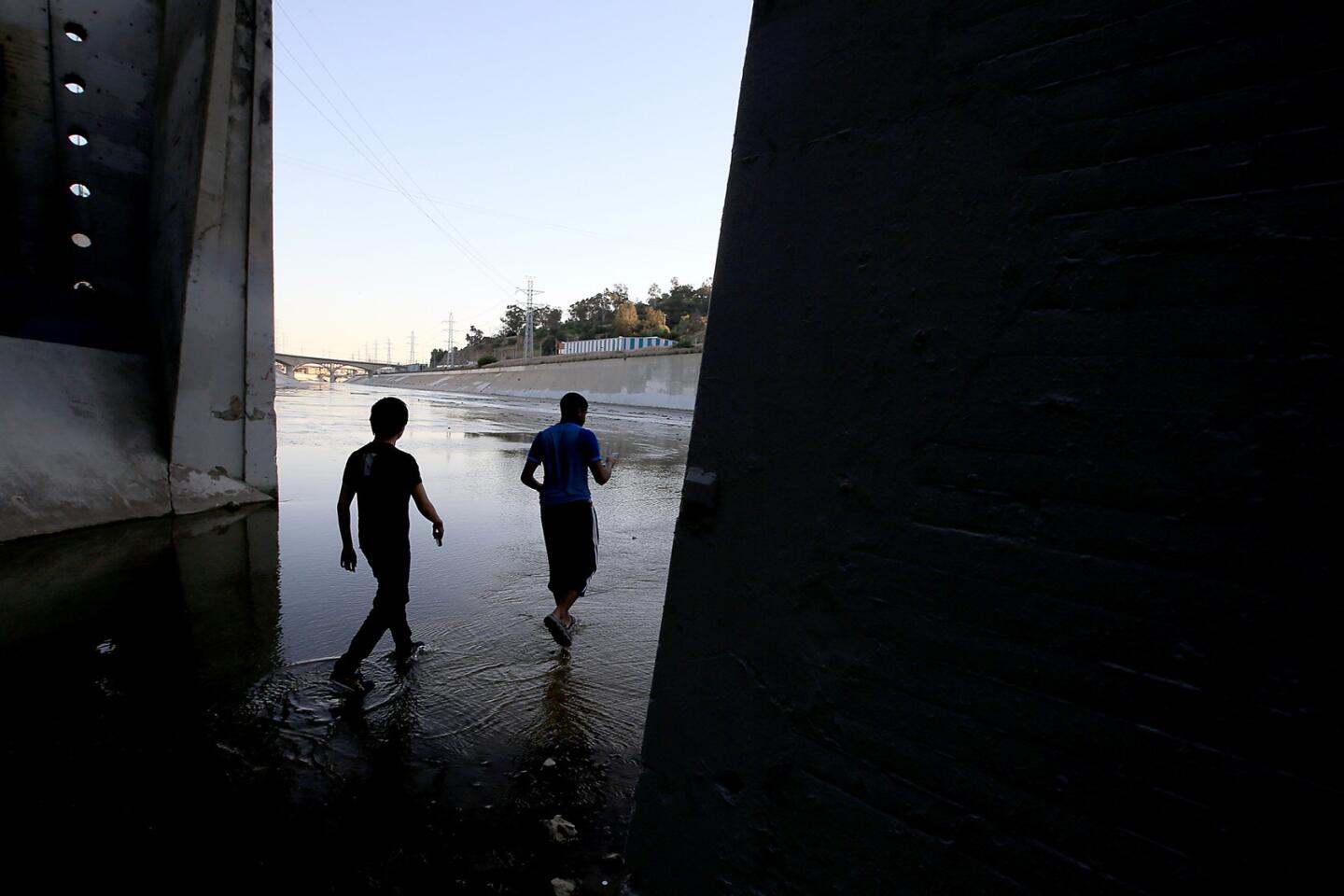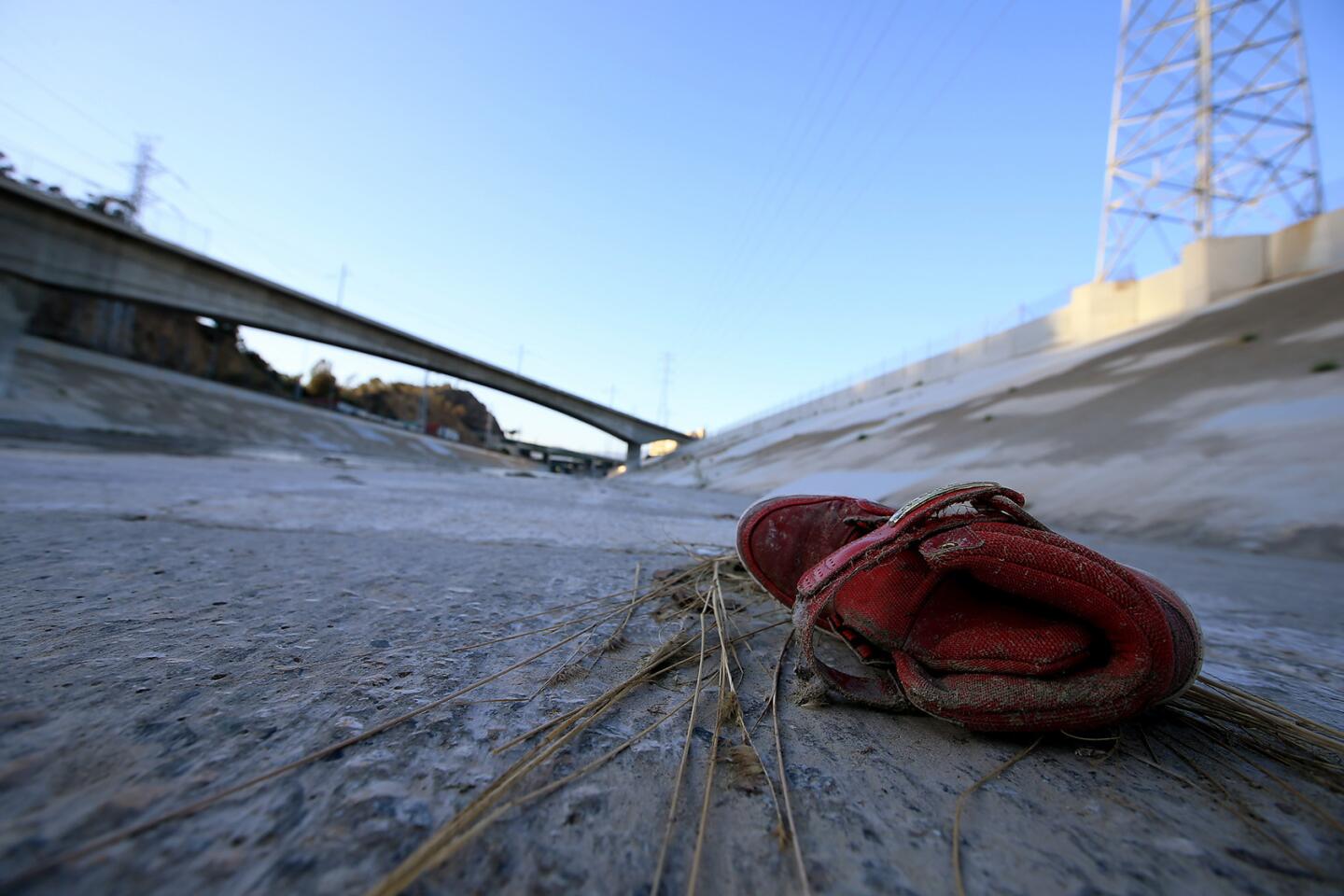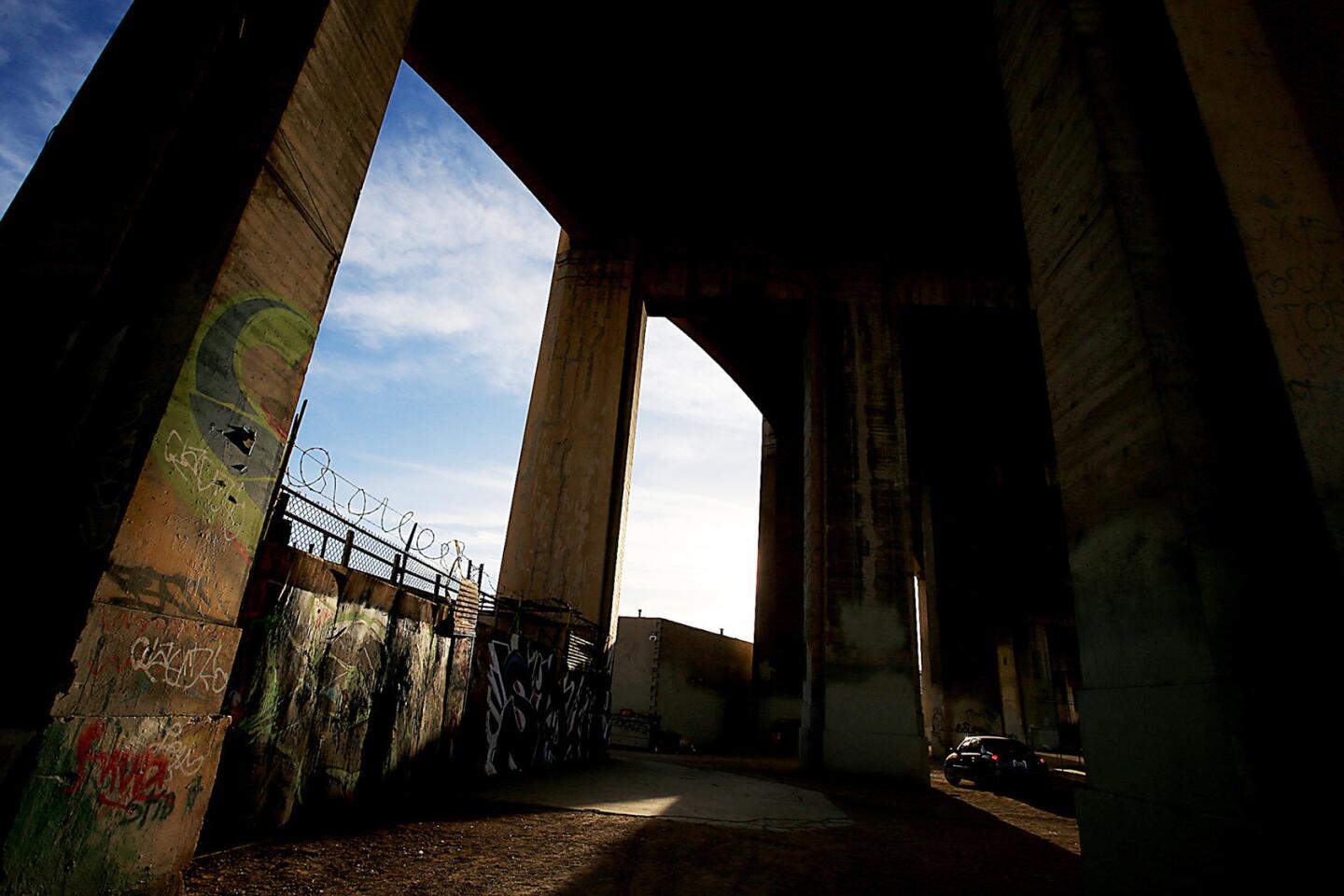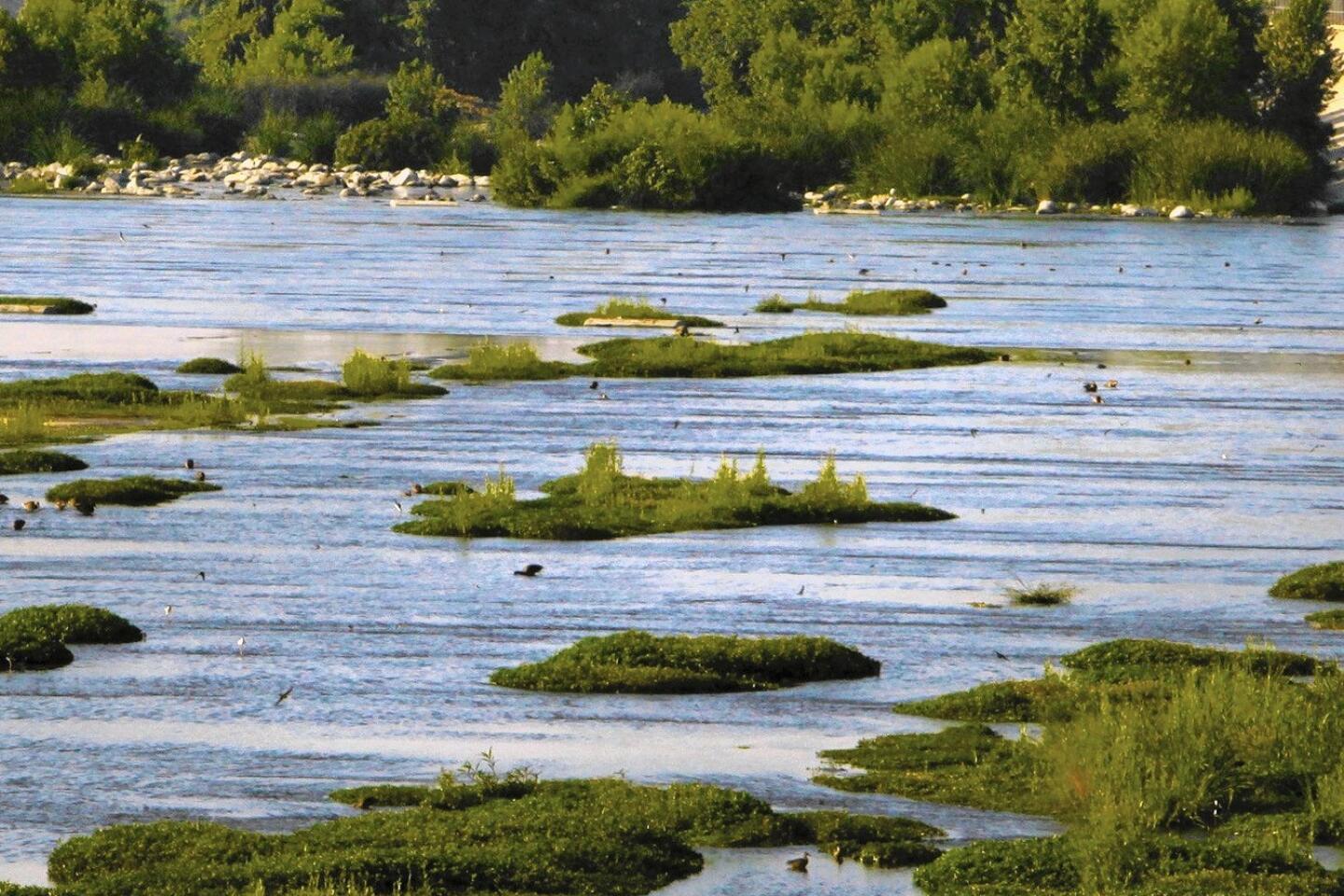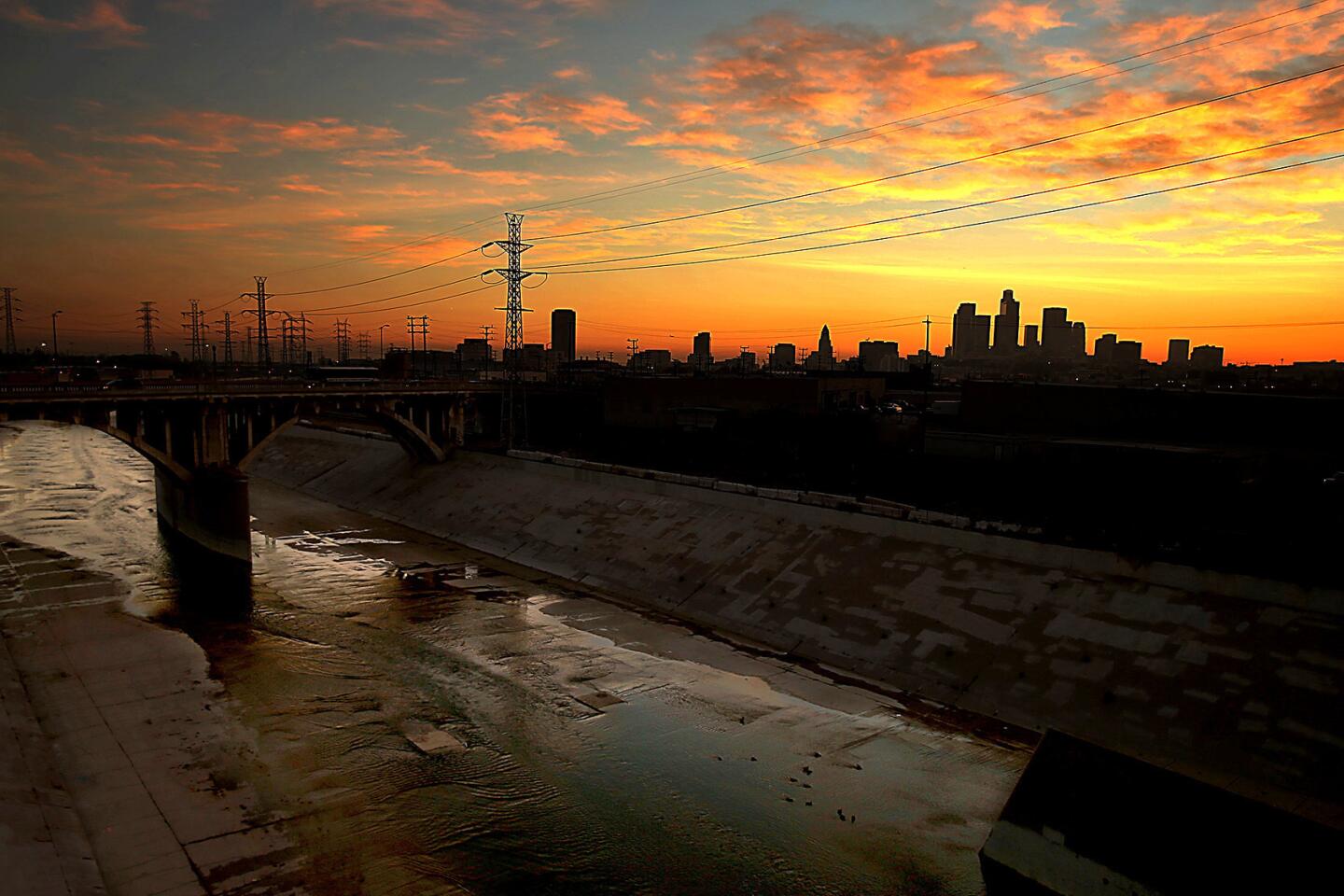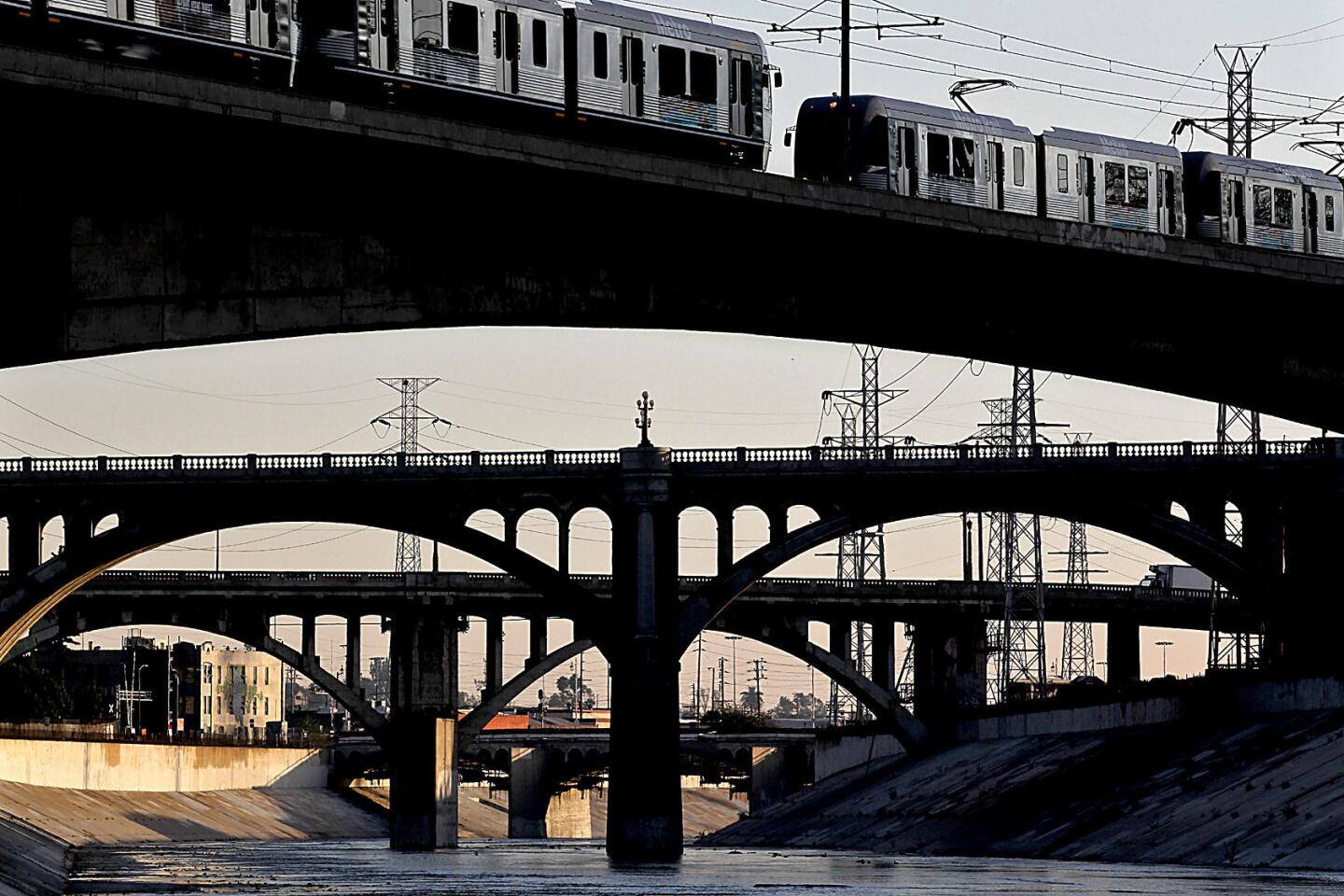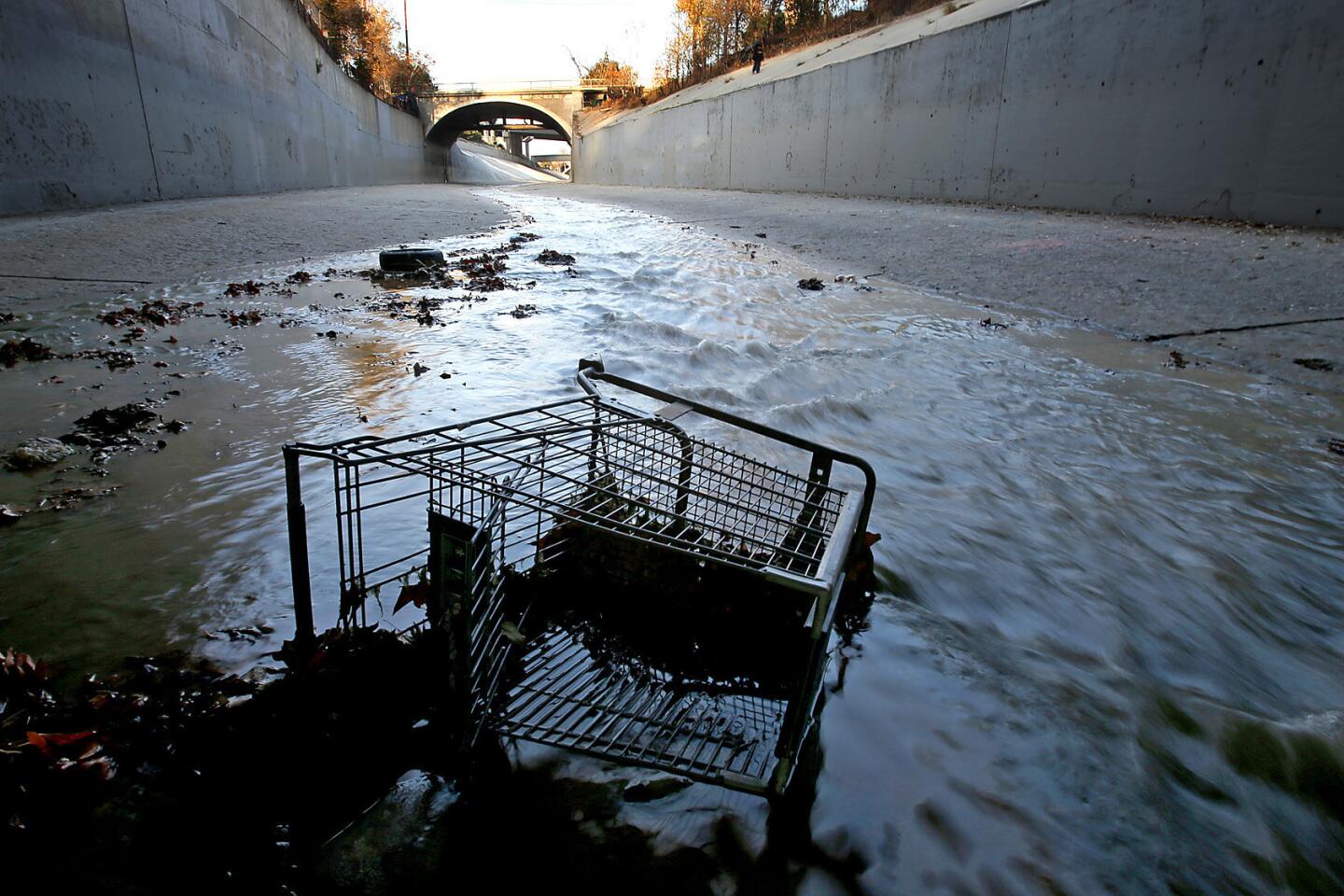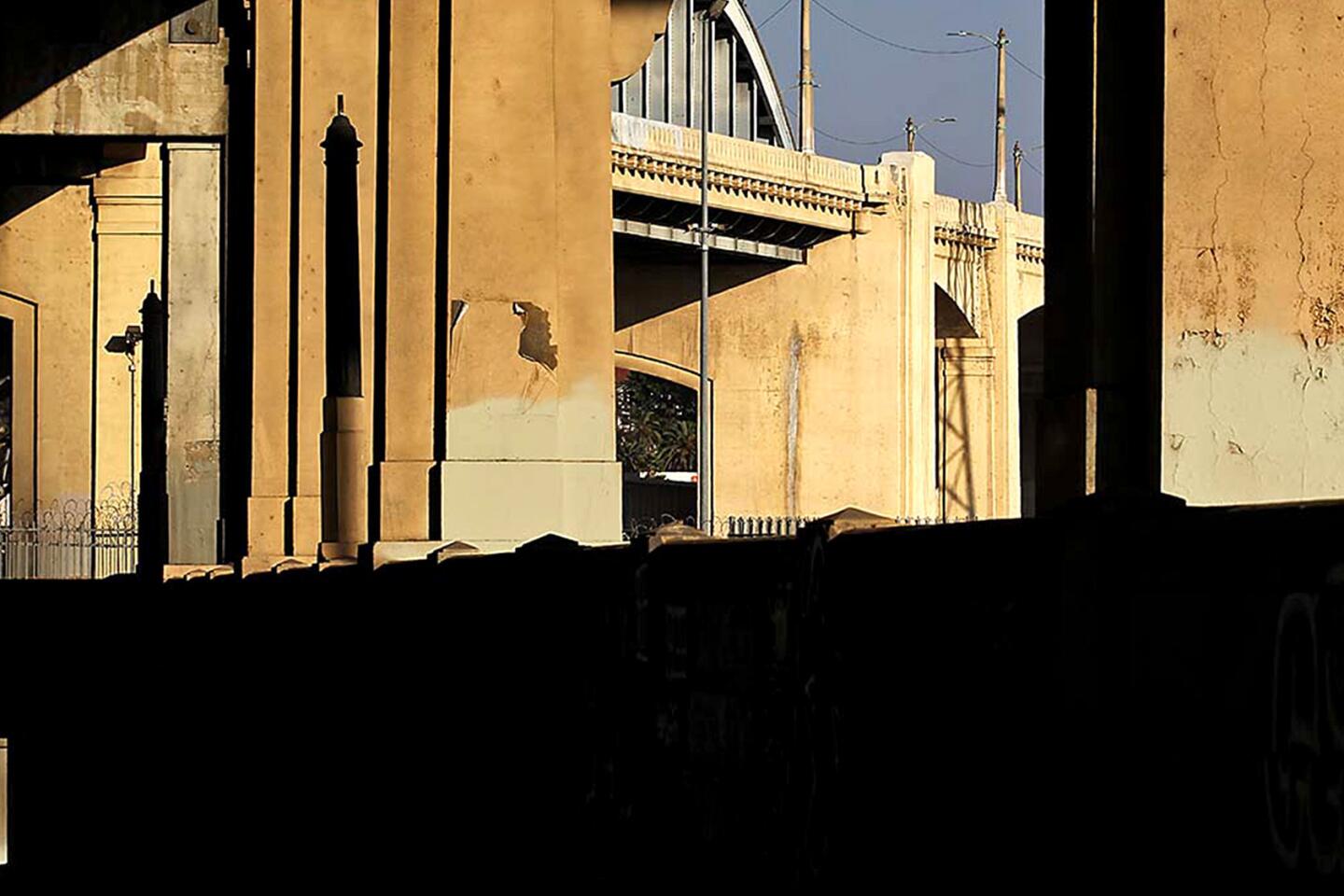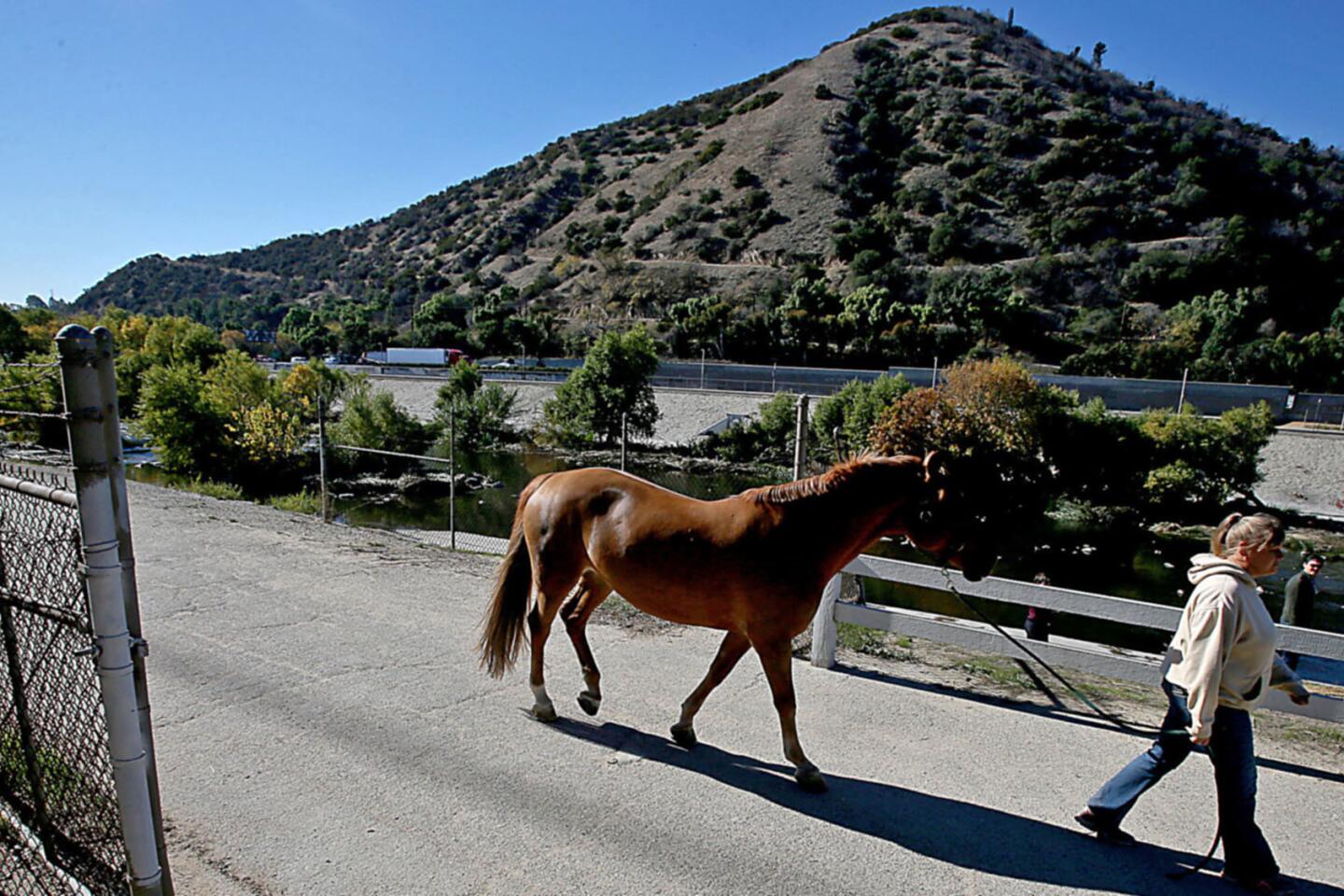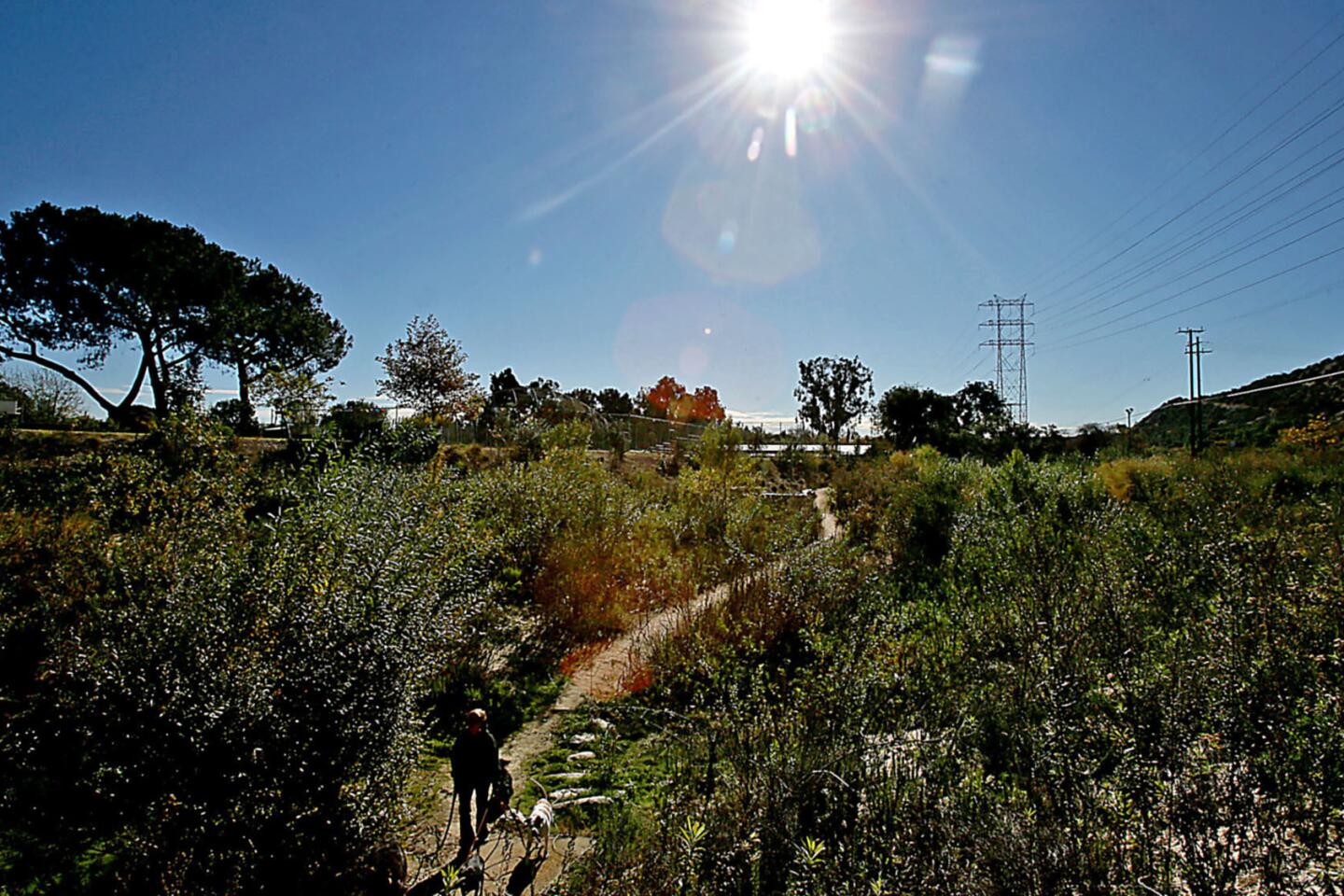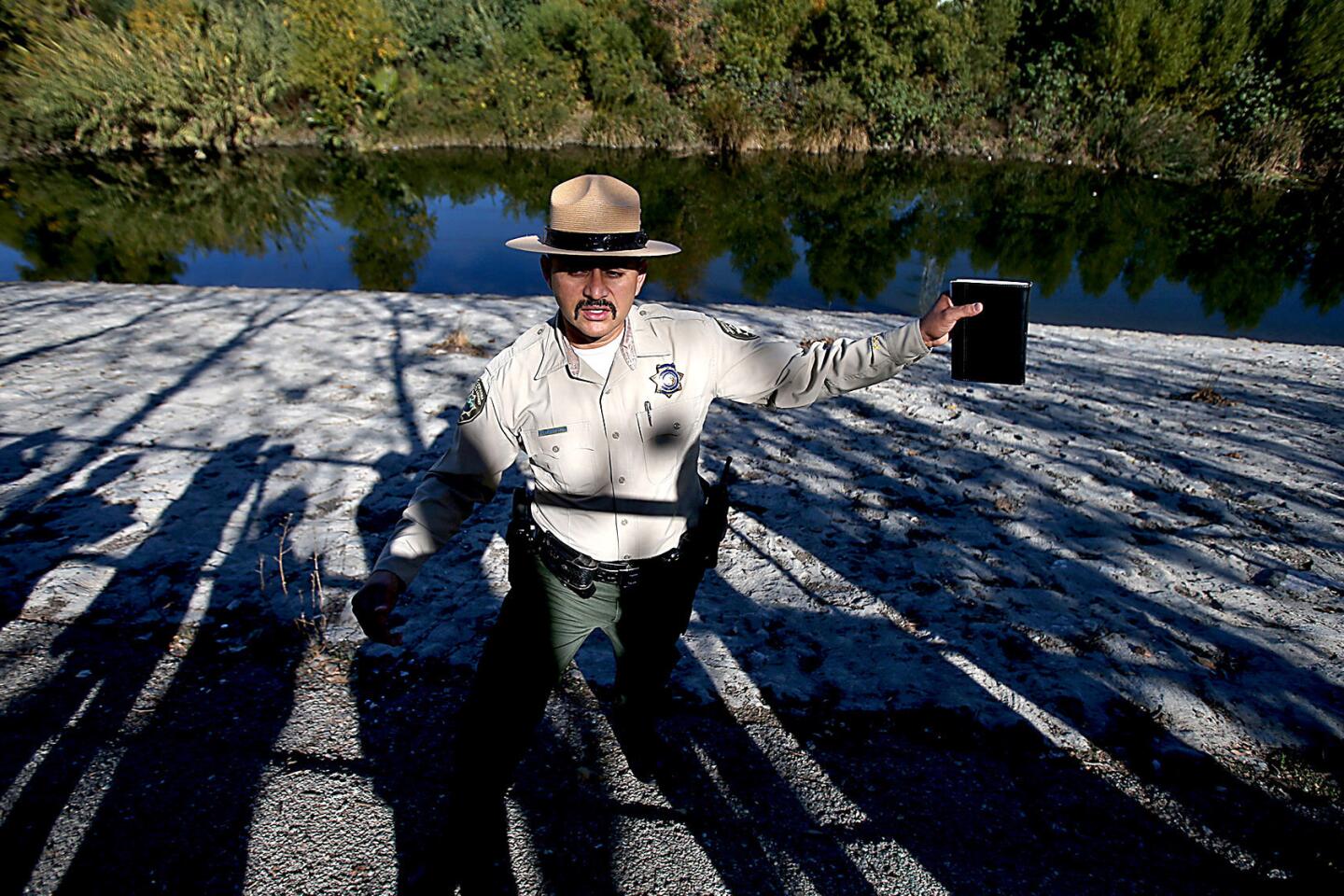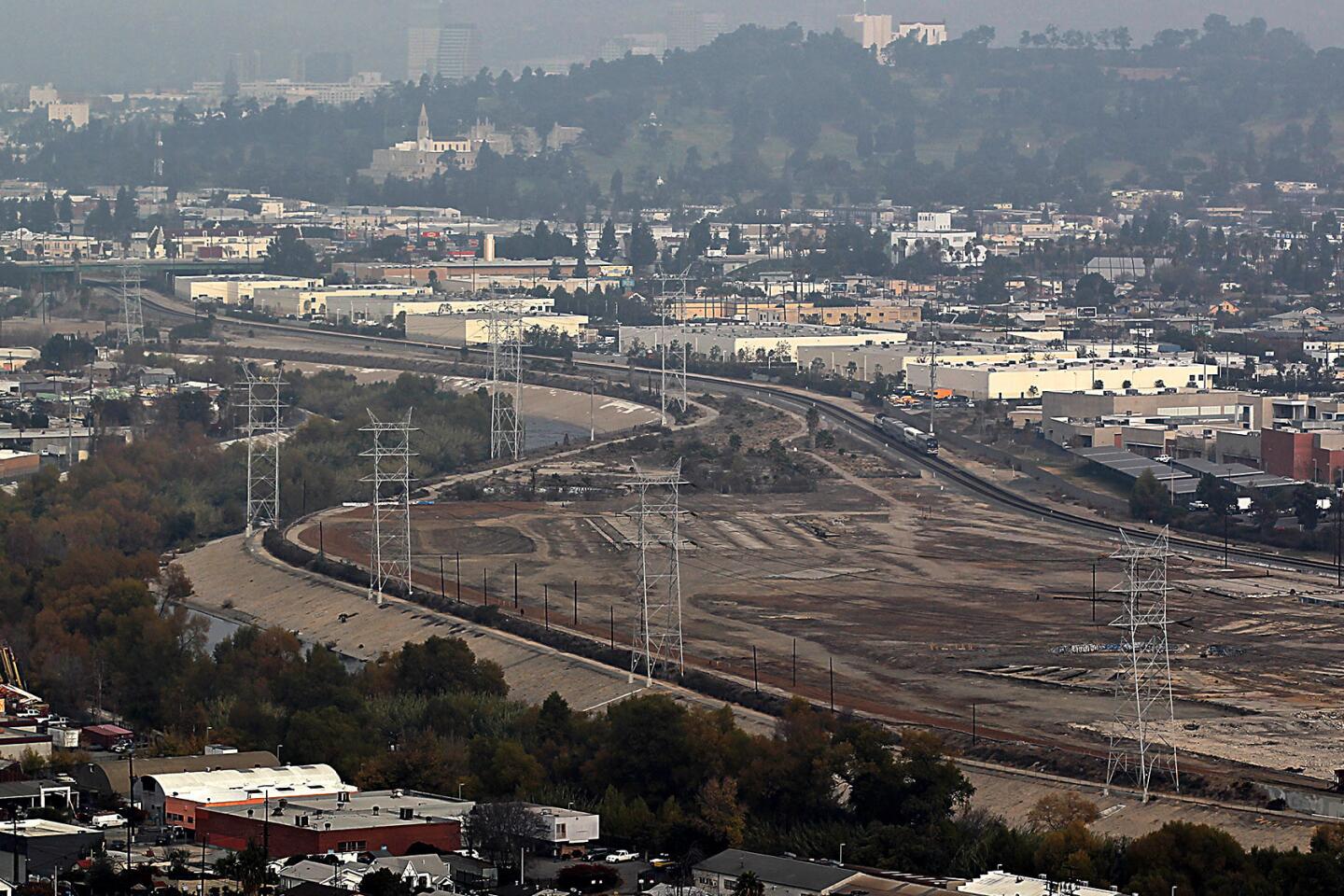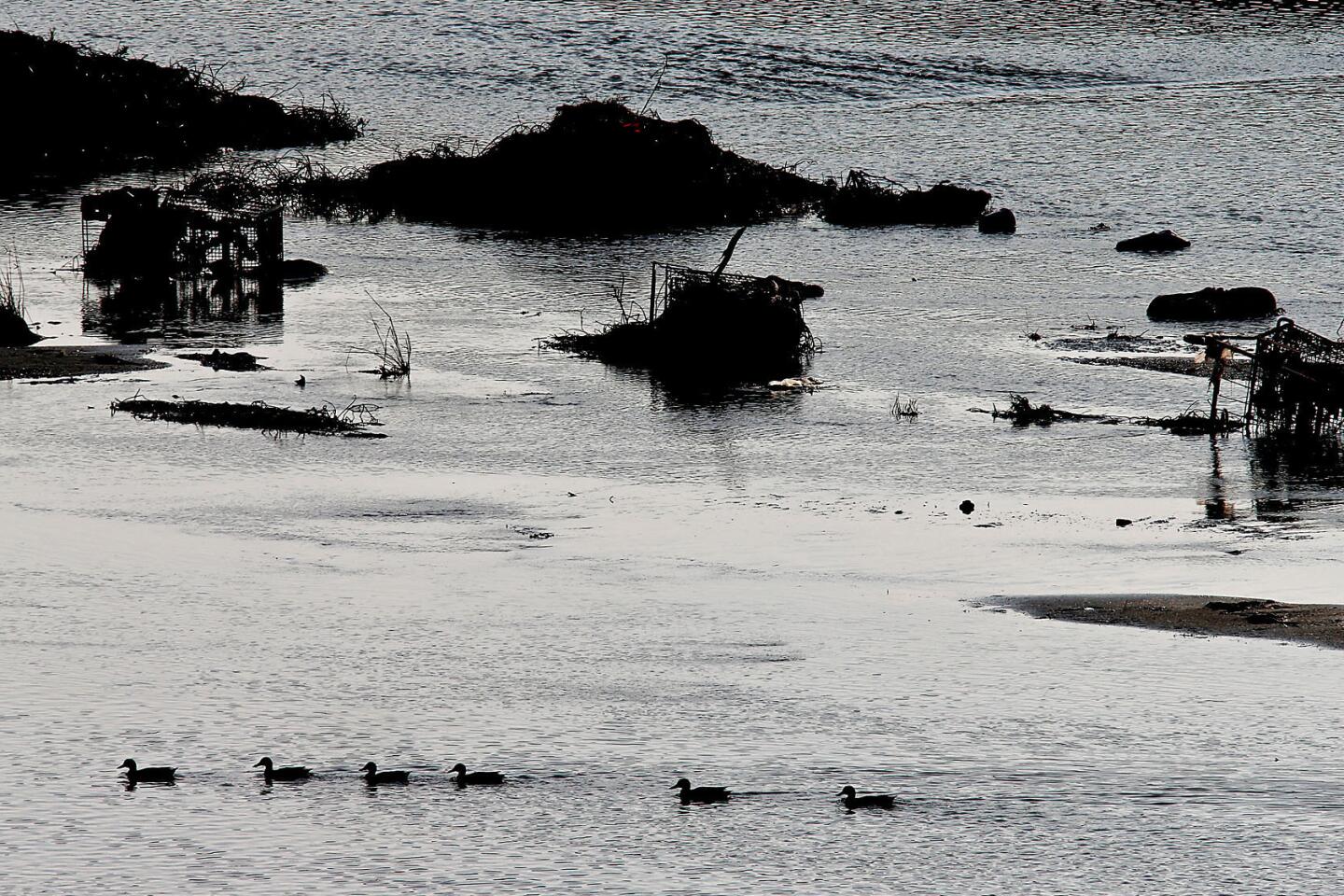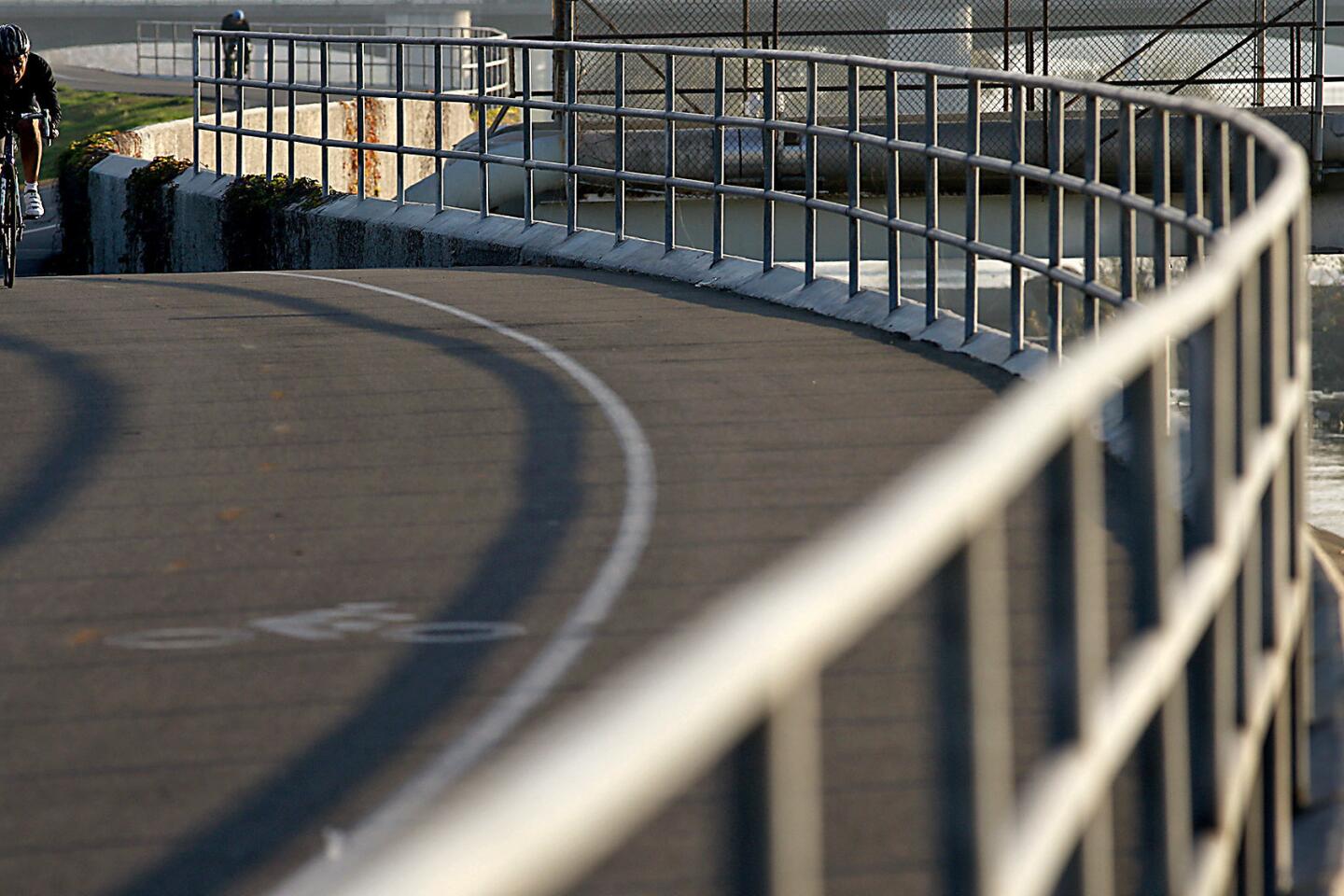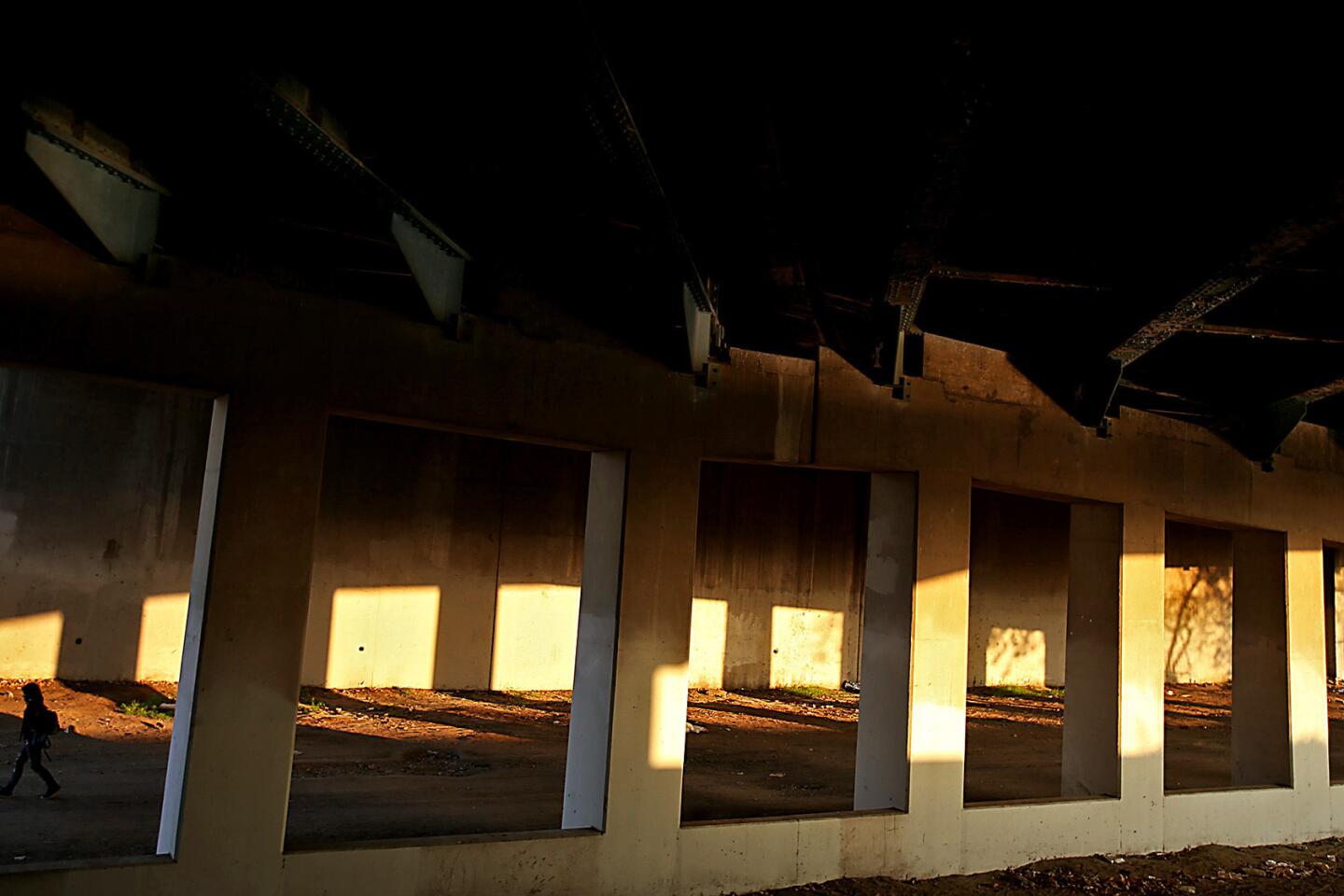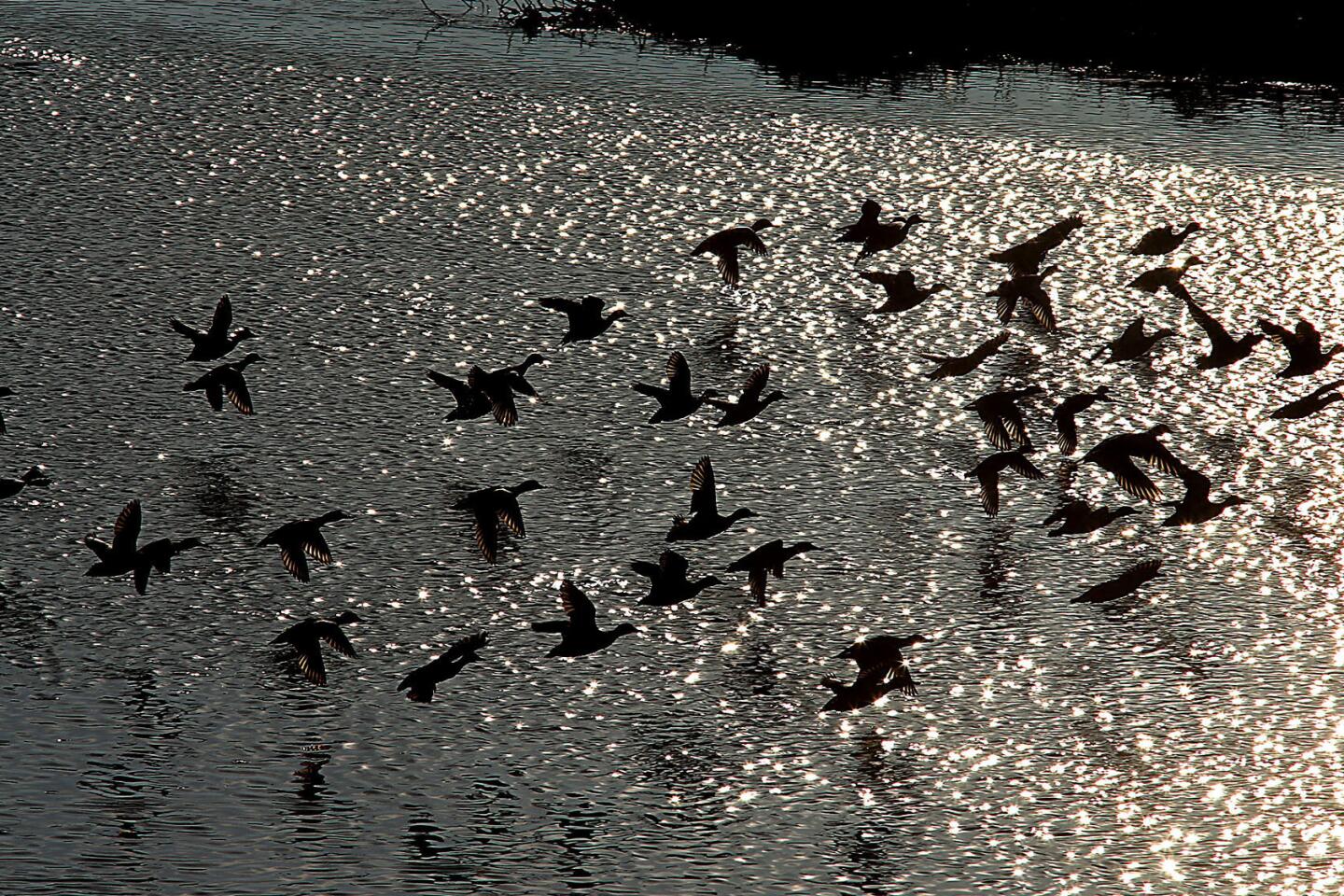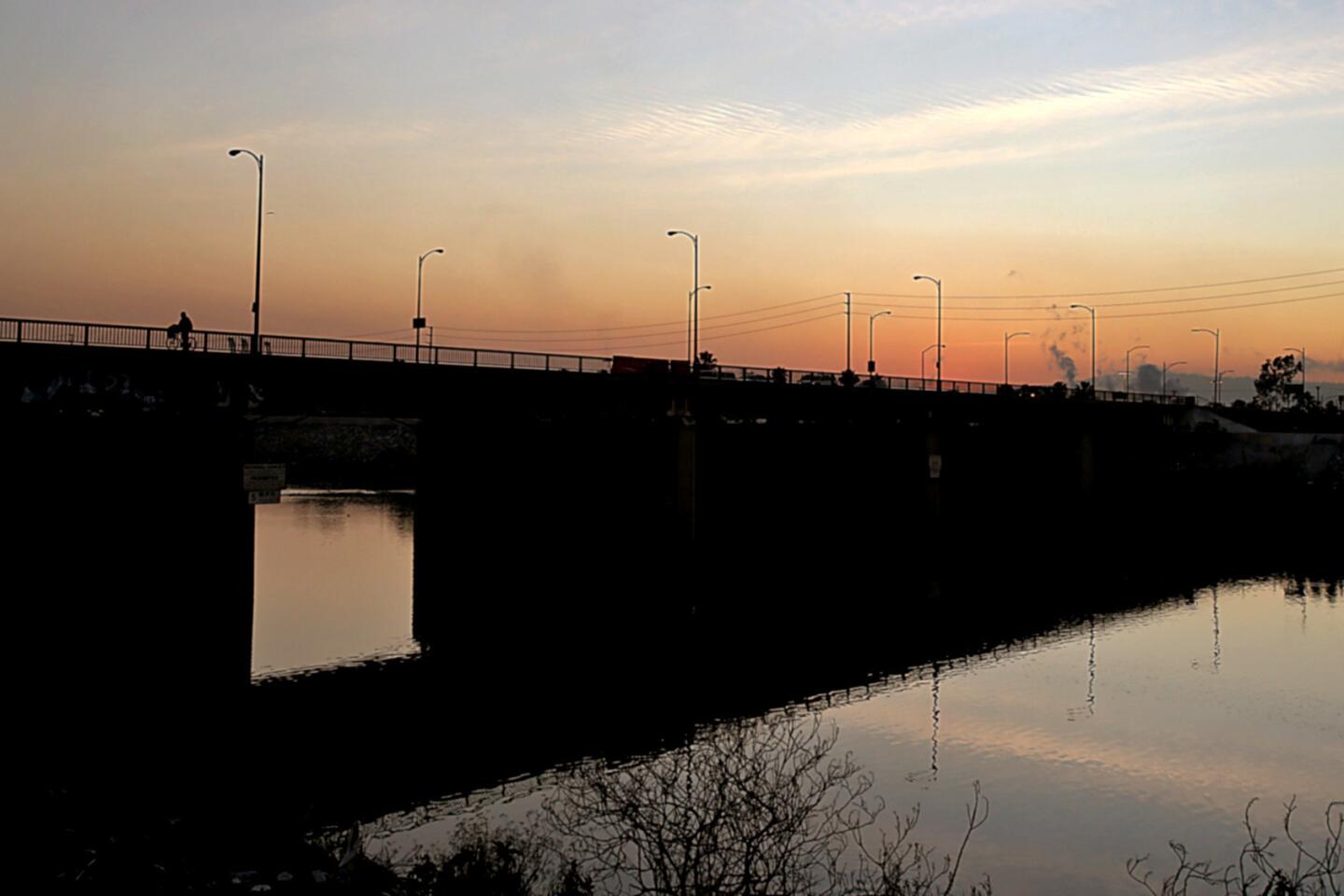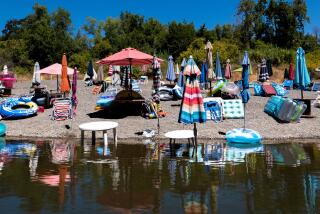That little section of the L.A. River you inherited might actually be worth something
- Share via
When the city of L.A. set out to build a bike lane along the banks of the Los Angeles River in Elysian Valley, there was a surprising obstacle.
Much of the river channel there doesn’t belong to the city, the county or any other government agency. For reasons lost to history, many of the industrial properties that abut the river there actually extend into the concrete channel itself.
Though it could be argued that any value in the land was long ago surrendered through flood control easements, the city offered 75 owners token payments of $2,000 for a bikeway easement.
All but one accepted.
Now that architect Frank Gehry is at work on a plan to tie all 51 miles of the river into a coherent park, the potential has arisen for private property owners to reap new benefit from previously worthless land or — if they are hard-nosed about it — to hinder a signature civic project.
From the river’s headwaters in the Santa Susana and Santa Monica mountains to its mouth in Long Beach, nearly a third of more than 500 parcels that intersect the river are privately owned, a Times analysis of assessor records has found. Including tributaries such as the Tujunga Wash and Arroyo Seco, about 400 parcels that fall somewhere within the concrete channel are registered to people or companies.

Flying over the L.A. River -- courtesy of Google Earth -- Doug Smith and Jon Schleuss point out some unlikely owners. Read the story
These owners hold about 15% of the river’s area in lots that range from tiny slivers to whole sections of the river. Some extend from properties outside the river to the channel centerline. Others extend from bank to bank and beyond. A few look like rights-of-way for roads or bridges that no longer exist.
The remainder is owned by dozens of government agencies, principally the Los Angeles County Flood Control District.
The owners include giants like Forest Lawn, Warner Bros. and Southern Pacific Railroad, the quirky Compton Fishing and Hunting Club, dozens of warehouses and gritty factories in Vernon and plain folk who didn’t even know they are river owners.
William Meade of Bakersfield was tickled when told that he still owns a piece of the river in Elysian Valley.
Meade said he inherited the four-acre parcel from his father, who bought it at a tax sale.
It’s a nice talking piece, but there was no value to it. We tried to sell it for $4,000. I desperately tried. ... Nobody wanted it.
— William Meade of Bakersfield, who was surprised to learn that he still owns a piece of the L.A. River
“It’s a nice talking piece, but there was no value to it,” Meade said. “We tried to sell it for $4,000. I desperately tried. I got Realtors involved. Nobody wanted it.”
Meade made his last tax payment of $332 in 2004 and assumed the land had been sold at auction.
It was put up for auction but no one made a bid, a spokesman for the Los Angeles County assessor said. The property remained in Meade’s name with a zero tax bill.
See the most-read stories this hour >>
Several owners contacted by The Times said they assumed that the Flood Control District had taken control of their river parcels.
“It’s kind of news to us that we actually own something that’s part of that concrete,” said Robert Hertzing, superintendent of the Lakeside Golf Club.
A hedge separates the golf course from the channel, Hertzing said. The club trims its side and the Army Corps trims the river side.
Other owners, though, were aware of the value their property represents to a future river park.
Ken Kaplan, who once managed and still owns the Smokehouse Restaurant in Burbank, said he obtained the land behind the restaurant more than 30 years ago from Forest Lawn, which was trying to clear its real estate portfolio of unwanted land. He recalled that he paid “a few hundred bucks.”
“I had no use for it at all,” he said. “But there is some bragging right to it. I own a piece of the river. People will look at you like you’re nuts.”
Kaplan joked that he once considered building a banquet room over the river. Now, he says, he tells his kids, “You never know, maybe they’ll run a monorail down there, or parkland.”
A spokeswoman for Forest Lawn said there was no record of that transfer and that the company considers its remaining parcels in the river the property of the Army Corps.
Gehry, whose work on behalf of the L.A. River Revitalization Corp. was disclosed in August, has not yet revealed a detailed plan.
He may face a challenge finding the common theme connecting rows of single-family homes that abut the Arroyo Calabasas tributary in Woodland Hills and the looming blue facade of the Farmer John packing plant in Vernon.
But as planners sift through the residual private holdings, they’ll undoubtedly shake out some odd and forgotten pieces of L.A. history, like the story Craig Dresman grew up with.
Back in 1915, Dresman said, his father bought a piece of riverbed to mine sand and gravel. The business thrived until World War II when, Dresman recalled, the Army needed beasts of burden. The government paid for the mules and shipped them to Burma.
The river property in Vernon — by then lined in concrete by the Army Corps of Engineers — became a neglected heirloom behind a truck service yard that Dresman’s heirs still own.
The history of river parcels can be cloudy. A spokesman for the Flood Control District said the agency acquired portions of the river after its channel was lined in concrete in the late 1930s.
He said no records could be found to show how the property was acquired, at what cost or why large portions were not acquired.
In an email, Warner Bros. spokeswoman Jessica Zacholl said the Flood Control District obtained an easement over the river portion pursuant to a judgment recorded in 1943.
Zacholl said Warner Bros. regards the property to be under control of the Flood Control District, a position echoed by a spokeswoman from Forest Lawn, which still owns three parcels in the river.
For the mostly small-business owners along an 11-mile stretch of the river from the 134 Freeway to just south of downtown, the potential value of their title has progressed beyond the hypothetical.
Their properties have been identified for acquisition in Alternative 20, the Army Corps of Engineers’ plan for restoring that portion of the river.
The $1-billion restoration project, awaiting approval by Congress, could begin this year, said Army Corps spokesman Jay Field. According to the funding rules, the city would be responsible for land acquisition. The real estate portion of the Army Corps feasibility study says 117 parcels totaling 181 acres are needed.
Establishing the value of those parcels could be problematic. The basic appraisal technique of finding sales of nearby comparable properties won’t work because there have been no sales of river property. As the county assessor acknowledged in dropping Meade’s tax bill, river properties have no current value in the marketplace.
But some owners are alert to the possibility that they hold great value as a public resource.
“To me, it has some value to somebody,” said Joe Patterson, who along with his siblings inherited a commercial building on Blake Avenue in Elysian Valley.
Patterson said he would be pleased to see the river developed as a park, but that he sees the family property as an investment that should yield a return.
“Certainly with the revitalization and the fact that it’s actually being used, that value has increased,” Patterson said.
Allan Abshez, a partner at the law firm of Loeb and Loeb and a board member of the Los Angeles River Revitalization Corp., argues that any real value was essentially erased after a group of river advocates kayaked from Sepulveda Basin to Long Beach in July 2008 to prove the river could be navigated.
Two years later the U.S. Environmental Protection Agency designated the river navigable. That declaration brought to bear a common-law right of access, Abshez said.
“If you have a navigable stream and it goes through somebody’s property, you can be in the streambed and you’re not trespassing,” Abshez said.
Calling the river “the next big L.A. real estate story,” Abshez said owners should be happy to donate their land for park.
“If you own property fronting the river, that is going to turn into a tremendous asset,” he said. “It’s like owning frontage on the beach.”
But not every property owner would be happy to have the public treading on his or her land to get to the river.
The one property owner who contested the city’s purchase of a bikeway easement asked for $206,000 — not based on the value of the land but the cost of building a fence, lighting and security system to prevent intrusion from the bike path.
The city ended up settling for $7,000 and had to pay more than $7,000 in costs.
Then there are those who see their river parcels as part of a larger whole. Steve Appleton, an artist who runs a kayak river touring business on his small plot of land in Elysian Valley, said he hopes that other river owners like himself will see that the highest value of their land would be contributing to a civic renaissance.
“Instead of being a question of land value, it becomes a question of design and a benefit of the landowner and the public space,” Appleton said.
ALSO
Editorial: Can Frank Gehry fix the L.A. River?
A ‘linear Central Park’: Frank Gehry’s plan for L.A. River takes shape
Volunteers remove tons of trash from Los Angeles River as Earth Month cleanup continues
Twitter: @latdoug
More to Read
Sign up for Essential California
The most important California stories and recommendations in your inbox every morning.
You may occasionally receive promotional content from the Los Angeles Times.
